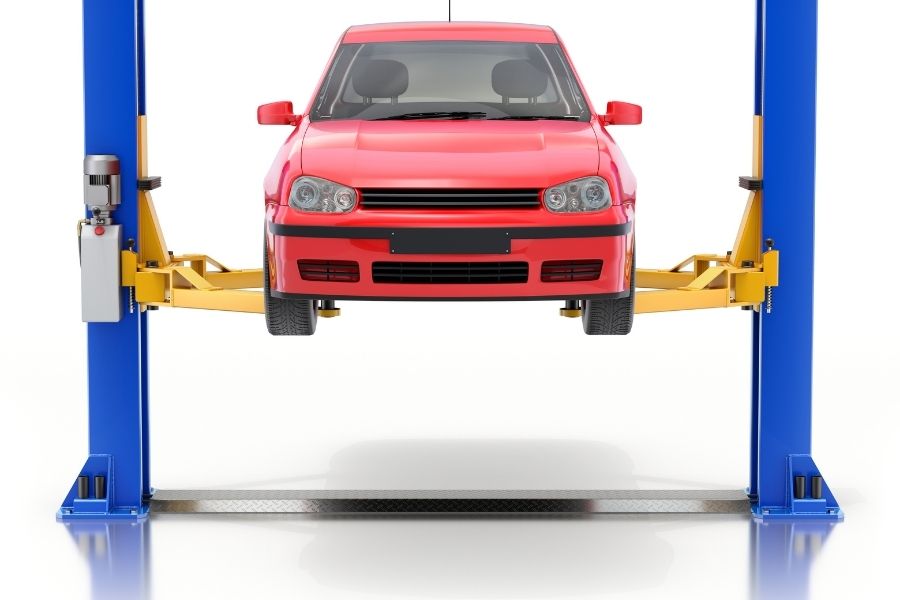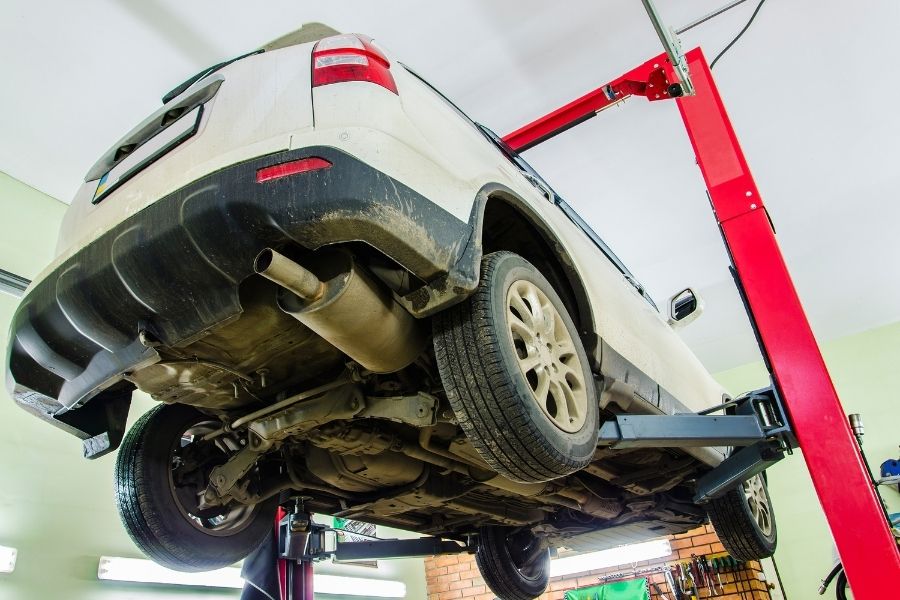
A Bendpak Lift is a popular sight in almost any mechanic shop. However, if your Bendpak lift malfunctions, serious problems can arise. Not only will a malfunctioning Bendpak lift cause your wallet to suffer due to the decrease in productivity, but also the risk of injury to you and your employees is a serious possibility.
The functioning of your Bendpak lift is critical. If you notice your Bendpak lift is not performing as it used to, stop and consider if one of the following common problems is the culprit behind your Bendpak lift’s malfunctioning.
If you are experiencing one of these problems with your Bendpak lift, consider the accompanying solutions on how to fix the issue. Also, if any of your Bendpak lift parts need replacing, contact SVI International here so we can help you get your Bendpak lift back in top shape!
Common Problems (and Solutions) with your Bendpak Lift
One of the first common problems with your Bendpak lift is that it lowers more slowly than before. If you notice your Bendpak lift is lowering slower than usual, consider these common problems and their accompanying solutions:
- Release valve is clogged: Your Bendpak may be lowering slower because the release valve is clogged. If this is the case, check the cleanliness and hydraulic fluid level. If you notice the hydraulic fluid is contaminated, and you are also using transmission fluid therein, you are going to need to clean and ultimately replace the entire system.
First, clean the release valve in solvent. Next, utilize compressed air to blow out the valve thereafter. Finally, replace it with a new part to get your lift back into top shape.
2. Cylinders are binding: If you notice the cylinders on your Bendpak lift are binding, contact customer support immediately to get the issue addressed.
3. Pressure fitting is too long: If the pressure fitting is too long, this can also cause your Bendpak lift to lower more slowly. To remedy this issue, replace the current fitting on your Bendpak lift with a shorter thread lead.
The second common problem you may have with your Bendpak lift is that your lift will not rise up. If this occurs with your lift, check out these common problems that can cause the lift not to raise, and their accompanied solutions:
- Relief valve is leaking: If the relief valve is leaking, you are going to need to replace the old valve with a new valve to stop the leakage.
2. Air inside the oil: Having air inside the oil can cause your Bendpak lift to not rise. To see if there is air inside the oil, first check for the proper oil level. Next, bleed the sealers and check to see if the oil seal is damaged or cocked.
If the oil seal is damaged, you will need to replace the seal. If the oil seal is not damaged, next check the inlet screen. A dirty inlet screen can also result in air getting inside the oil. Thus, if the inlet screen is clogged, you will need to clean or replace it.
3. Pump is damaged: If the pump on your Bendpak lift is damaged, the lift will not rise effectively, or at all. If this is the case, you need to replace the pump with a new one.
4, Leaks in the lowering valves: To solve a leaking lowering valve, first you need to remove all possible contamination from the valve. Next, follow the owner’s manual which accompanied your pump to replace the dirty oil.
If the handle is not able to move smoothly after you complete these steps, you will need to purchase a new bracket or handle assembly to replace the old one.
5. Pump will not prime: If your pump will not prime, first check the oil level. If the oil level is normal, you will need to flush the release valve and remove any and all possible contamination. Next, check to see if the oil seal is damaged or cocked. If the oil seal was damaged, you will need to replace it with a new part.
If the oil seal was not damaged, ensure the pump mounting bolts are correct by referring to your owner’s manual. If the mounting bolts are correct, next check the inlet screen, If the inlet screen is clogged, you will need to clean or replace it. Finally, if the inlet screen was not clogged, you will need to purchase a new pump.
If after you have followed all the proper operating procedures, and all mechanical locks have been released, but the vehicle still becomes stranded in the air, stop your work immediately. This can be a sign of a serious safety situation and you should not continue to use, or try to fix the lift, without having a clear direction. First, make sure the locking positions are secure, and then contact your Bendpak lift’s factory for directions on how to proceed.
If your Bendpak lift stops working correctly, you need to know how to solve the common problems that can be the source of the malfunction. A malfunctioning lift will not only slow down productivity and cost you money, but also can result in bodily injury if not remedied quickly.
For all your Bendpak lift needs, we at SVI are here to help. With our massive inventory consisting of three different warehouses and fifty different product lines, we can supply you with the part you need to fix your lift quickly and efficiently. Not only do we carry the parts you need for your Bendpak lift, but we also can create custom parts for your lift!
Call us today at 1 (800) 321-8173 or stop by our office to pick up your Bendpak lift part today!

